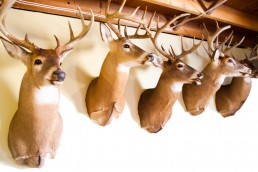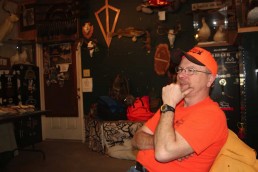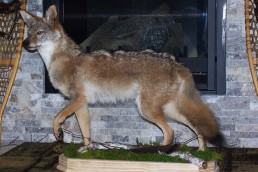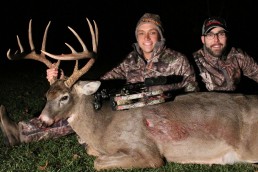Taxidermy has become an Art Form
SHARE THIS POST
I started my taxidermy work by means of a primitive course that was offered by the Northwestern School of Taxidermy. This was at a time when the salary for a journeyman butcher was $70 a week at one of the grocery stores. The first lessons were fine for small animals and birds, and I did a fox mount for $25 that came out beautiful. I became quite good with small birds and animals, especially with the hawks and owls that were not protected at that time.
When I received the lessons for my first deer head mount and the lessons for tanning the skin, my first finished head was a disaster. The skin would shrink and the form to hold the head was heavy and clumsy. I was ready to give up the headwork completely.
But then as I had for guests on for Art Mercier’s radio show, I met Carl Cotton, Dominick Villa and John Moyer of the Field Museum. They gave me the formula for a tanning solution that solved my problems.
Early taxidermy was done through the process of stuffing skins with excelsior or straw to somehow make it look alive. Carl Akeley, who was a taxidermist from a century ago, was a naturalist too and perfected a process of making a mannequin that would imitate the animal’s carcass so it would appear alive after the animal’s skin was draped over it.
Akeley originally worked on a staff in New York, but came to Chicago with the opening of the Field Museum. He also worked with a group from a taxidermy shop on Lincoln Avenue called the Aard-Vark from 1895 to 1909.
There, they perfected the process of mounting the animals on mannequins. The two elephants in the Field Museum are examples of his work; his wife actually killed the biggest one. If you go through the area of the museum with the mounted animals and read the descriptions of the mounts you’ll see many examples of his works, including the famous four-seasons deer group.
Are you enjoying this post?
You can be among the first to get the latest info on where to go, what to use and how to use it!
Akeley made trips to Africa, and some with Theodore Roosevelt. He once killed a leopard that attacked him by strangling it with his bare hands. He was also attacked by a rogue elephant, and would have been crushed if the animal’s tusks had not been stopped by the hard ground.
He died on November 7, 1926 and was buried on the slopes of Mount Mikeno. His final resting place is in Parc National Albert, a sanctuary for gorillas. He is considered “The Father of Modern Taxidermy.”
Even if you aren’t interested in learning taxidermy, as a hunter, I’d recommend you get a copy of the McKenzie Taxidermy Supply catalog (800-279-7985). You will find many examples of forms and panels, and if you want to save your deer feet for a foot rack, you will find it in there too. There are panels to mount your antlers, a form for pheasant or turkey tails as well. And if your mounts need cleaning, you can find your cleaners in there. There are also instructions on how to mount a pheasant. If you can skin a bird, then mounting one is easy. But you still might want to practice with a pigeon first. The biggest problem you will have is cleaning it if it’s bloody. I’ve taught many of my friends how to mount one.
Mounting a deer head is even easier now. You will need the form with the measurement that matches your deer head. Again, you can find forms of every size in this catalog. Find the lesson on mounting deer heads to get the proper eye size. There are also many tanning solutions to read up on, as you will need one for preparing the skin for your head form. Your biggest problem will be in splitting the ears and spreading the skin on the form, putting in the ear the liners and setting the eyes.
You can find examples of taxidermy work being done today in many sports shops. There are also mannequins too, thanks to the examples available from Carl Akeley’s training. Even some preserves now supplying exotic animals to hunt for now contain a variety of animal forms to choose from if you want work done.
Taxidermy is an art form, and those displays at the Field Museum prove it always has been. In many cases, these are famous animals obtained by famous people and were completed through methods of the day then. The work done by the taxidermist today is far superior to those works done around the turn of that century. There was a time when Jonas Bros. in California was the standard for the best taxidermy work. Now there is fine work also done by the many other taxidermists and has, was and will always be an admired skill. Now, you just have to find a taxidermist who suits your standards and your pocketbook. And if you have a trophy that you want mounted, go see an example of the work at a museum, at an outdoors store or at a business of a local specialist.
MWO
SHARE THIS POST
Did you enjoy this post?
You can be among the first to get the latest info on where to go, what to use and how to use it!
Howie Switalla
For hunting or deer preparation questions, Howie Switalla may be reached at 773-763-3317.



